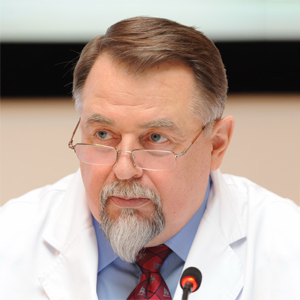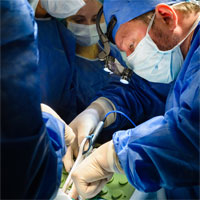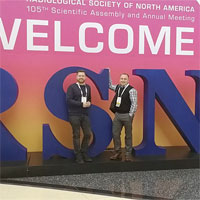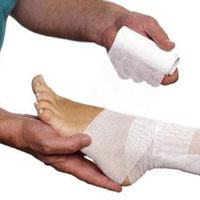Chief of the department: Nebelas Roman Petrovich, M.D., traumatologist-orthopedist.
Traumatology and orthopedics are two closely related areas of medicine that deal with the study, treatment and prevention of the pathology of the musculoskeletal system. Modern traumatology and orthopedics is the treatment of patients with injuries, as well as diseases of the musculoskeletal system: arthrosis of large and small joints (coxarthrosis, gonarthrosis), aseptic necrosis, hip dysplasia, trauma consequences, foot deformities, Hallux valgus.
At the highest level, surgical treatment is carried out in the following areas:
- Endoprosthetics of large joints (hip, knee, shoulder, ankle)
- Osteosynthesis with fractures of different localization and complexity
- Reconstructive surgery with flat feet, Hallux valgus and other deformities of the feet
- Application of minimally invasive and endoscopic technologies
- Corrective osteotomy
- Minimally invasive and arthroscopic surgery for joint damage
- Reconstructive plastic surgery and surgery of muscle and tendon damage
- Emergency assistance for injuries
The specialists of the clinic own the most modern technologies of surgical treatment.
Also at your disposal is the possibility of undergoing rehabilitation after surgery.
Endoprosthetics of joints
Not so long ago, problems with large joints of the lower extremities, such as arthrosis, dysplasia or systemic diseases such as rheumatoid arthritis or systemic lupus erythematosus, as well as some specific diseases (aseptic necrosis of the femoral head) and the consequences of injuries were practically an insoluble problem and became an insurmountable obstacle to normal, full activity and positive impressions of life.
Treatment, of course, was conducted. However, the methods available then did not solve the main task — to completely restore the disturbed mobility, to get rid of lameness and pain forever, to return to normal life.
Today, these problems solve arthroplasty of joints, which is a high-tech operation, in which instead of the affected joints, the patient is placed endoprostheses — durable and fully compatible with the body tissues artificial joints. For many years and decades, people forget about pain. He does not need to constantly drink medicines and go to medical procedures, because the joint that causes suffering is no more.
Modern endoprostheses are reliable, durable and do not cause negative effects on the body due to so-called biological and mechanical compatibility. The materials used in them ensure the normal functioning of the artificial joint, as your own.
The endoprosthesis is designed in such a way as to provide a normal function of the joint, to allow free and painless movements with sufficient amplitude. In principle, practically all modern endoprostheses meet this requirement.
The need to replace the affected joint arises when the prospects for improving its condition are absent and the disruption of its function makes it difficult for you to get used to the rhythm of life (difficulties in performing your work duties and daily activities, playing sports, etc.).
The main indications for endoprosthetics are:
- Coxarthrosis (deforming arthrosis of the hip joint)
- Gonarthrosis (deforming arthrosis of the knee joint)
- Aseptic necrosis of the femoral head
- False joint of femoral neck
- The defeat of joints in systemic diseases (rheumatoid arthritis, systemic lupus erythematosus, etc.)
- Hip Dysplasia
Endoscopic surgeries are performed daily in the departments of the Pirogov National Medical and Surgical Center. Our specialists have sufficient skills and experience in performing these high-tech operations. Annually about 2500 patients pass through the hands of our specialists and after treatment return to normal life. We use modern, high-quality endoprostheses of reliable manufacturers with a worldwide reputation. Our specialists will always choose the appropriate endoprosthesis that will ensure the full restoration of impaired functions and will last for many years.
Of course, sometimes performing endoprosthetics is impossible.
Contraindications to surgery may be, for example:
- Recent myocardial infarction or stroke
- Acute infectious diseases
- Severe renal failure
- Decompensated diabetes mellitus
- High activity of systemic disease (for example, rheumatoid arthritis)
- The presence of open trophic ulcers or wounds, as well as pustular lesions of the skin in the area of ??operation
In order to protect the patient from possible complications, a comprehensive examination is conducted before the operation, aimed at identifying possible contraindications. The question of the possibility of surgery is always solved individually and with a full-time examination of the patient.
Osteosynthesis
Osteosynthesis, produced through mini-invasive access, allows to reduce pain syndrome in the postoperative period, accelerate the healing of soft and bony tissues, reduce the likelihood of postoperative complications (inflammation and suppuration in the fracture region).
Stable osteosynthesis, used in our clinic, using modern plates with angular stability, blocked pins ensures reliable fixation of fragments, which allows us to activate patients in the early postoperative period, improve the functional results of treatment, shorten the period of inpatient stay and disability.
Applied methods of surgical treatment are the gold standard throughout the world for performing surgical interventions, with limb injuries.
Correction of deformation of feet
Modern approaches to surgical correction of foot deformities take into account in detail all the subtleties of the onset and development of the disease. Periodically encountered opinion about the uselessness of surgical treatment is a consequence of the use of imperfect techniques that do not take into account the specific features of deformation formation and improper application of certain techniques without taking into account the individual features of the foot in a particular patient. The fear of surgical treatment is also due to the fact that the use of some methods suggested a long and painful postoperative period, during which it was necessary to wear bulky casts and long-term restrict normal walking.
The currently applied methods presuppose not only a comprehensive approach to eliminating deformations and normalizing disturbed relationships, but also a competent consideration of a number of parameters that can differ substantially in different patients. As a rule, the operation consists not only in removing the protruding “bones”, but also bringing the anatomy of the foot to a state in which the risk of re-development of the deformation becomes minimal. This is achieved both by correcting the angles of the mutual arrangement of the metatarsal bones, and by changing their length. In addition, the ligamentous tendon apparatus of the foot does not remain without attention. For example, to prevent deformation tendencies, some tendons move, that is, the place of their attachment changes, or their length is adjusted — elongation or shortening is performed, depending on the need.
To maintain fragments of bones in the desired position, modern fixing devices are used — screws and special staples. In addition to sufficient fixation to prevent unwanted bias, these structures generally do not require removal and their presence does not cause any negative consequences for the patient.
Competent application of modern techniques and technologies allows to significantly facilitate our patients postoperative period. In most cases, the next day, walking is possible, while it is sufficient to use special footwear without plaster bandages.
Osteotomy
Osteotomy is an operation that aims to improve the function of the joint by eliminating the deformity of the joints by means of an artificial fracture or bone dissection with subsequent fixation. The main goal of osteotomy is not only restoration of the ability to support, but also a reduction in the load on the articular surfaces and slowing of the degenerative-dystrophic process occurring in the joint with arthrosis.
As a rule, osteotomy is carried out in those cases when other methods of surgical treatment can not eliminate painful sensations and restore the function of the joint. In addition, osteotomy is indicated to those patients by who, for any reason, total arthroplasty cannot be performed. Most often, osteotomy is performed on the bones of the extremities.
Also, osteotomy is used to correct congenital and acquired deformation of bones, incorrect position of limbs in various pathologies and diseases, bone fusion in the joints.
Osteotomy is usually performed under regional or general anesthesia. During the operation, the bone is cut, followed by fixation in a new position with the help of various devices (plates, bone grafts, special devices). This helps to evenly distribute the static and dynamic load on the joint surface, normalize intraosseous pressure, eliminate venous congestion and, as a result, significantly reduce the pain syndrome and slow the development of arthrosis.
Osteotomy can be open and closed. Closed osteotomy is carried out through small incisions
Depending on the purpose of the operation, the osteotomy may be corrective, and an osteotomy to create a support. As a rule, osteotomy, aimed at restoring the support function, is used for rare indications for fractures of the femur. Corrective osteotomy is used both to correct bone deformation, and to eliminate deformity and improve joint function.
In some cases, with additional injuries, osteotomy is combined with other surgical interventions.
Osteotomy is an excellent treatment in the early stages of the development of arthrosis, in which the full destruction of the joint has not yet occurred. As a rule, with conduct of an osteotomy in time, the effect can persist for a long time.
Contact Information
Address: 105203, Moscow, Nizhnyaya Pervomayskaya str., 70
Contact phone number:
Fax:
How to reach us by using public transport
“Pervomaiskaya” metro station (last carriage of the train out of the city centre). From “Pervomaiskaya” metro station by any tram or trolley bus go to the stop “15th Parkovaya Street”. Go along the 15th Park Street to the intersection with the Nizhnyaya Pervomaiskaya Street, turn left and walk about a hundred meters to the entrance of the Pirogov National Medical and Surgical Center.



















